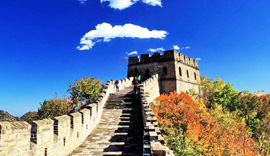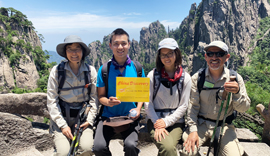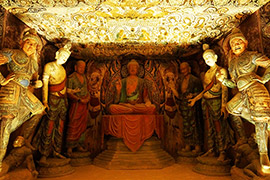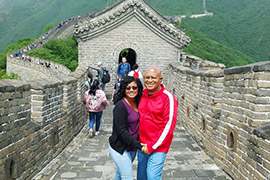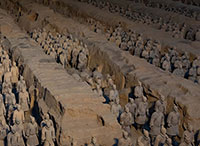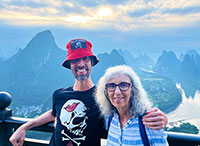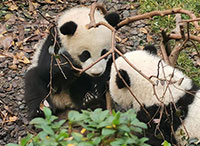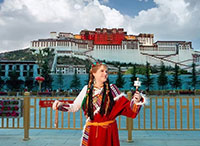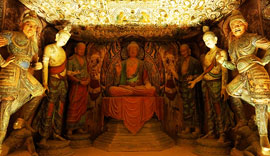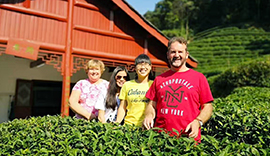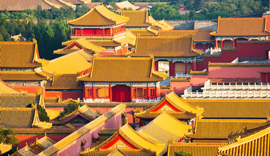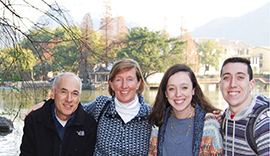Continue Unfinished Silk Road Trip in China after 20 Years
-- Marcin's 13-Day 6-City Silk Road Exploration from Lanzhou to Khasgar
-
 Marcin (USA)
Marcin (USA) -

-
Departure Date2019-05-13
-
Travel Length13 Days
-
Travel ThemeNature, Culture, Couple
-
Group Size2
-
Travel RouteLanzhou - Zhangye - Jiayuguan - Dunhuang - Turpan - Urumqi - Khasgar
-
HighlightsZhangye Danxia National Geopark, Jiayuguan Pass, Jiayuguan Museum of the Great Wall, Yulin Grottoes, Dunhuang Yardang National Geopark, Mogao Caves, Flaming Mountain, Bezeklik Thousand Buddha Caves, Heaven Lake, Id Kah Mosque, Karakul Lake
Silk Road
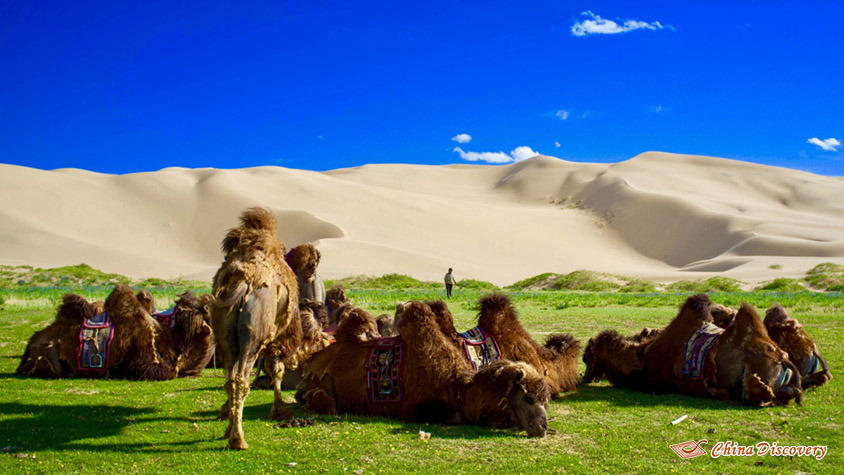
Camel Group on the Silk Road
Very long journey on China’s Part of a Silk Road. I started in Lanzhou Gansu Province and via Zhangye, Jiayuguan, Dunhuang, Turpan, Urumqi arrived to Kashgar Xinjiang Province. 3000 km later end up at the edge of Taklamakan desert- western end of PRC. Two weeks of endless desert landscapes , dust storms, constantly changing weather. From freezing cold to scorching hot. Journey in space but also in time. Two thousand years of human history connecting people and empires in Asia, Middle East and Europe. History of cooperation growth but also history of war and conflict. On personal note, my “Silk Route” journey started in Syria and Turkey almost 20 years ago. I think that inspiration for a journey came after I watched documentary series by Japanese NHK. Japanese TV crew traveled from China to Turkey thru Central Asia, crossing endless deserts and rediscovering long forgotten cities lost in a sand. Music by Japanese composer Kitaro perfectly matches and accompanies this dry and desolate landscape. So let’s start, long blog with many: people in history, strange sounding towns and even stranger sounding Chinese dynasties. Helping me remember this remarkable journey and learn something at the same time.
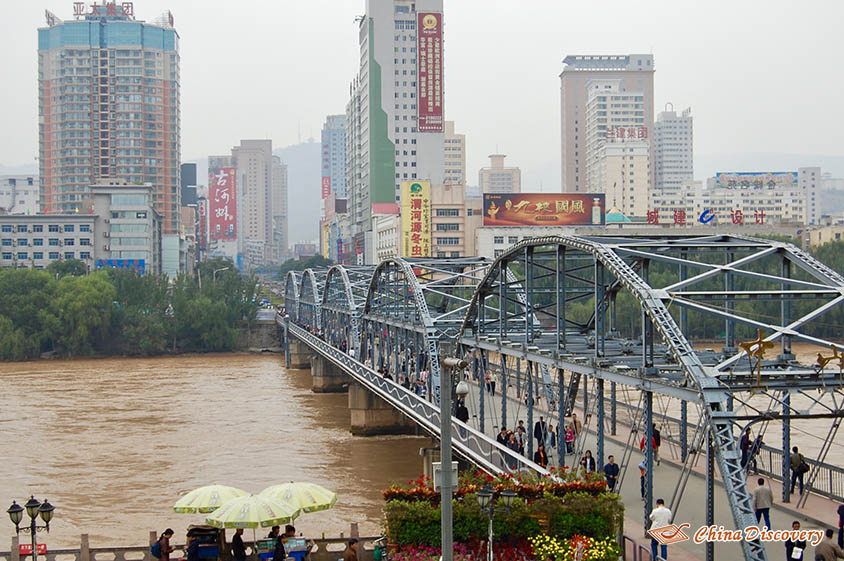
Zhongshan Bridge in Lanzhou City, Gansu Province
–Lanzhou is the capital and largest city of Gansu Province in Northwest China. Located on the banks of the Yellow River, is a key regional transportation hub. Historically, it has been a major link on the Northern Silk Road. Famous for its Iron Bridge. The Zhongshan Bridge was the first permanent bridge over the Yellow River. Construction of the bridge began in 1907 and the bridge was completed in 1909.
-The Silk Road was an ancient network of trade routes that connected the East and West. The Silk Road primarily refers to the terrestrial routes connecting East Asia and Southeast Asia with East Africa, West Asia and Southern Europe. The Silk Road derives its name from the lucrative trade in silk carried out along its length, beginning in the Han dynasty (207 BCE–220 CE). The Han dynasty expanded the Central Asian section of the trade routes around 114 BCE through the missions and explorations of the Chinese imperial envoy Zhang Qian.The Chinese took great interest in the safety of their trade products and extended the Great Wall of China to ensure the protection of the trade route. Trade on the Road played a significant role in the development of the civilizations of China, Korea, Japan, the Indian subcontinent, Iran/Persia, Europe, the Horn of Africa and Arabia, opening long-distance political and economic relations between the civilizations. Though silk was the major trade item exported from China, many other goods were traded, as well as religions, syncretic philosophies, sciences, and technologies. Diseases, most notably plague, also spread along the Silk Road. In addition to economic trade, the Silk Road was a route for cultural trade among the civilizations along its network. The German terms Seidenstraße “Silk Road” were coined in 1877 by Ferdinand von Richthofen, who made seven expeditions to China from 1868 to 1872. The first book entitled The Silk Road was by Swedish geographer Sven Hedin in 1938.
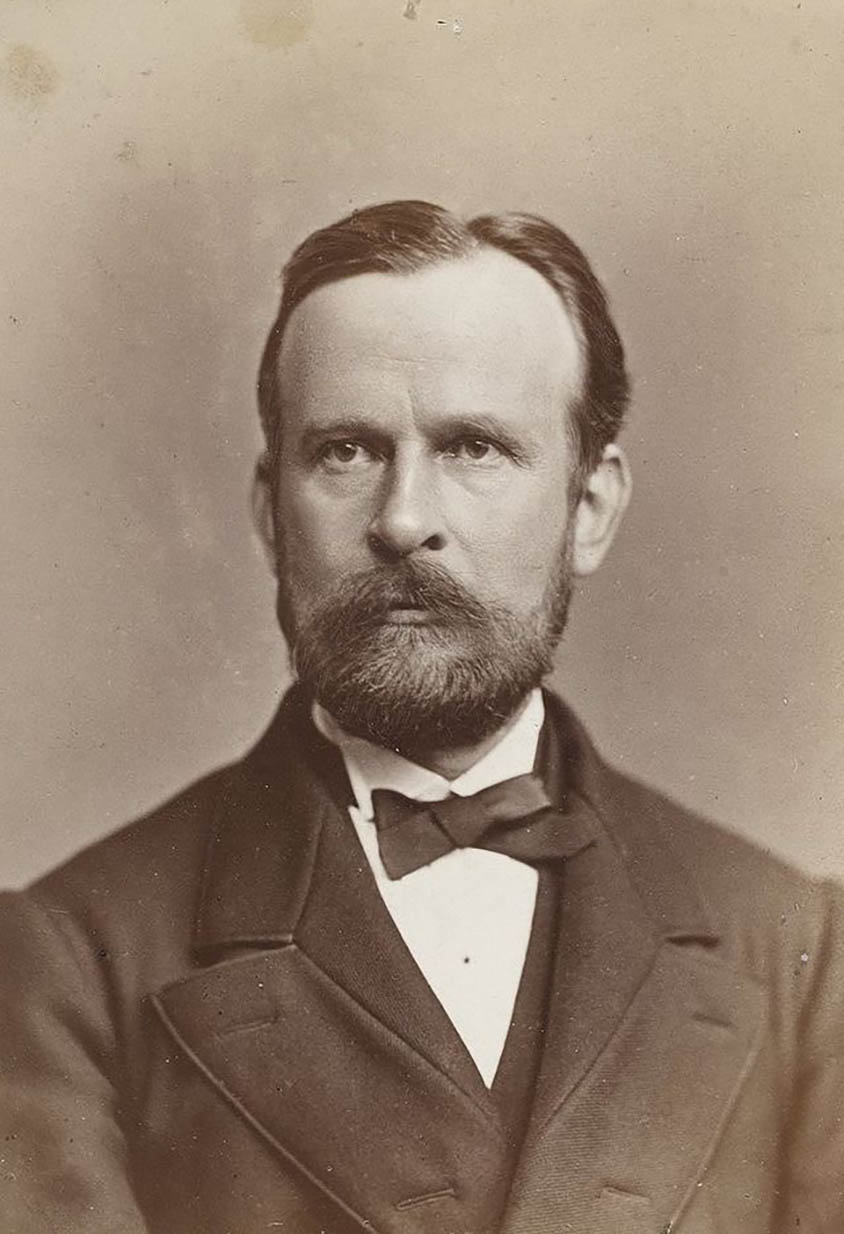
Baron Ferdinand Freiherr von Richthofen
-Person in history – Baron Ferdinand Freiherr von Richthofen , was a German traveller, geographer, and scientist. He is noted for coining the terms “Seidenstraße” – Silk Road in 1877. He was an uncle of the World War I flying ace Manfred von Richthofen, best known as the “Red Baron”. He studied Medicine at the University of Breslau and at the Humboldt University of Berlin. In 1860, he joined the Eulenburg Expedition, a Prussian expedition which visited Ceylon, Japan, Taiwan, Celebes, Java, the Philippines, Siam, Burma between 1860 and 1862. He then followed up his interest in China by several more trips there, and also to Japan, Burma, and Java.

Zhangye Danxia Landform Geographical Park
The Danxia landform near Zangye is a spectacular petrographic geomorphology landscape which is formed from red-coloured sandstones and conglomerates. The one in Zhangye was formed in the pre-Jurassic Age. Thousands of mountains and stiffs stretch like the colorful sunset glow. The barren mountains are covered by a red grit rock stratum. At the same time, some surfaces of mountains appear other colors, such as white, yellow, etc, and form many irregular lines and blocks looking like some abstract oil paintings.
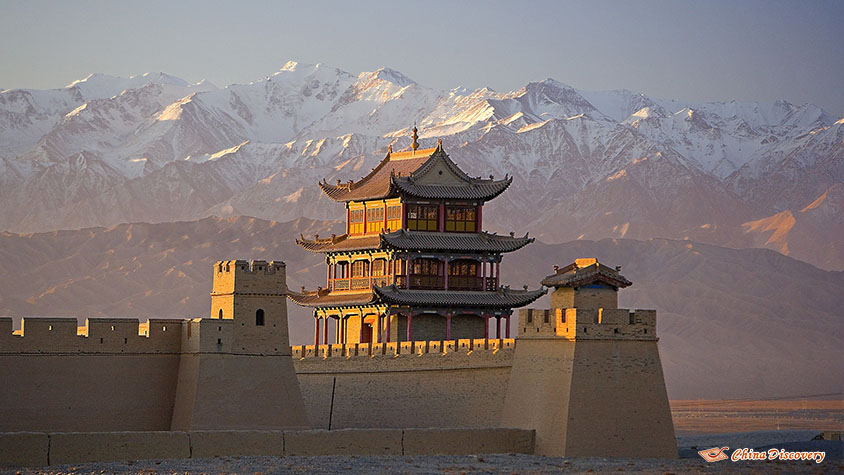
Jiayu Pass Near Jiayuguan City
-Jiayu Pass is the first frontier fortress at the west end of the Ming dynasty Great Wall, near the city of Jiayuguan in Gansu province. Along with Juyong Pass and Shanhai Pass, it is one of the main passes of the Great Wall. The pass is located at the narrowest point of the western section of the Hexi Corridor, 6 kilometers southwest of the city of Jiayuguan in Gansu. The structure lies between two hills, one of which is called Jiayuguan Pass. It was built near an oasis that was then on the extreme western edge of China. Among the passes on the Great Wall, Jiayuguan is the most intact surviving ancient military building. The pass is also known by the name the “First and Greatest Pass Under Heaven” which is not to be confused with the “First Pass Under Heaven” a name for Shanhaiguan at the east end of the Great Wall near Qinhuangdao, Hebei. The pass was a key waypoint of the ancient Silk Road. Jiayuguan has a somewhat fearsome reputation because Chinese people who were banished were ordered to leave through Jiayuguan for the west, the vast majority never to return.
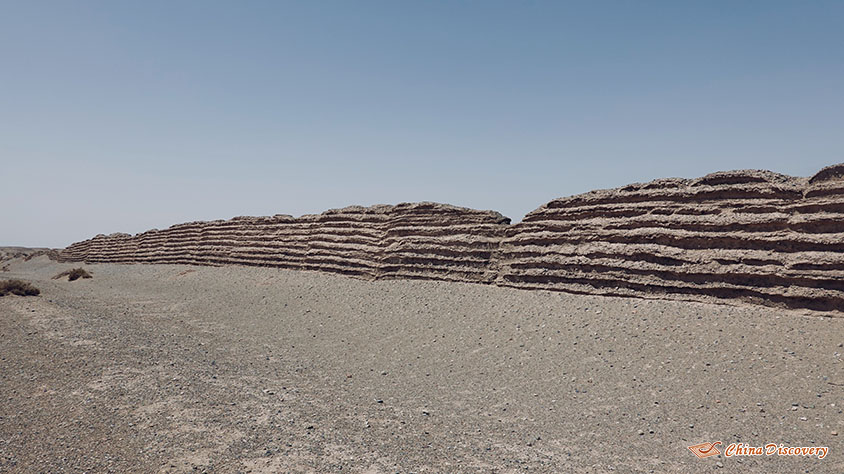
Ruin of Great Wall of Han Dynasty at Yumenguan Pass in Dunhuang
–Dunhuang – On route, I visited the Yumenguan Pass and Ruin of Great Wall of Han Dynasty.
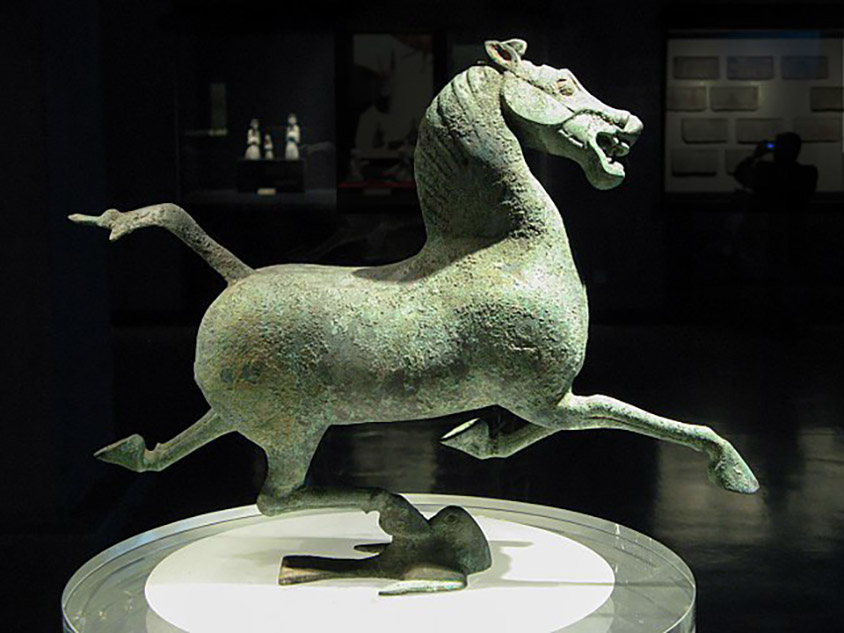
Bronze Galloping Horse Treading on a Flying Swallow in Gansu Provincial Museum in Lanzhou
-The Han dynasty was the second imperial dynasty of China (206 BC–220 AD), preceded by the Qin dynasty (221–206 BC) and succeeded by the Three Kingdoms period (220–280 AD). Spanning over four centuries, the Han period is considered a golden age in Chinese history. To this day, China’s majority ethnic group refers to themselves as the “Han Chinese” and the Chinese script is referred to as “Han characters”. It was founded by the rebel leader Liu Bang, known posthumously as Emperor Gaozu of Han, and briefly interrupted by the Xin dynasty (9–23 AD) of the former regent Wang Mang. This interregnum separates the Han dynasty into two periods: the Western Han or Former Han (206 BC – 9 AD) and the Eastern Han or Later Han (25–220 AD).
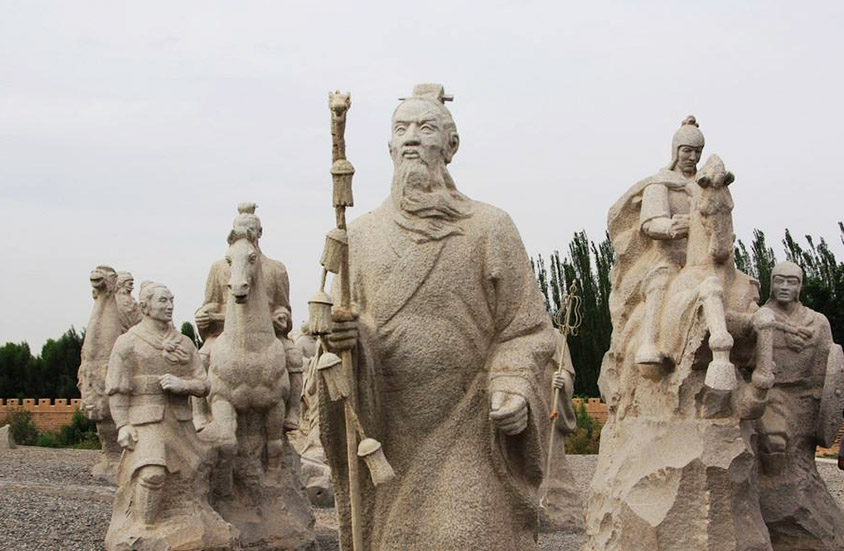
Statue of Zhang Qian in Jiayuguan
– Person in history – Zhang Qian was a Chinese official and diplomat who served as an imperial envoy to the world outside of China in the late 2nd century BC during the Han dynasty. He was one of the first official diplomats to bring back valuable information about the West, the remnants of the Macedonian Empire, Parthian Empire, Persia, India, Central Asia, etc. to the Han dynasty imperial court, then under Emperor Wu of Han. The objective of Zhang Qian‘s first mission was to seek a military alliance with the Yuezhi, in modern Tajikistan. However to get to the territory of the Yuezhi he was forced to pass through land controlled by the Xiongnu who captured him and enslaved him for ten years. During this time he married a Xiongnu wife, who bore him a son, and gained the trust of the Xiongnu leader. Later was able to escape. Zhang spent a year in Yuezhi and the adjacent Bactrian territory, documenting their cultures, lifestyles and economy, before beginning his return trip to China, this time following the southern edge of the Tarim Basin. On his return trip he was again captured by the Xiongnu who again spared his life because they valued his sense of duty and composure in the face of death. Two years later the Xiongnu leader died and in the midst of chaos and infighting Zhang Qian escaped. Zhang Qian returned in 125 BC with detailed news for the Emperor, showing that sophisticated civilizations existed to the West, with which China could advantageously develop relations. Upon Zhang Qian‘s return to China he was honoured with a position of palace counselor.
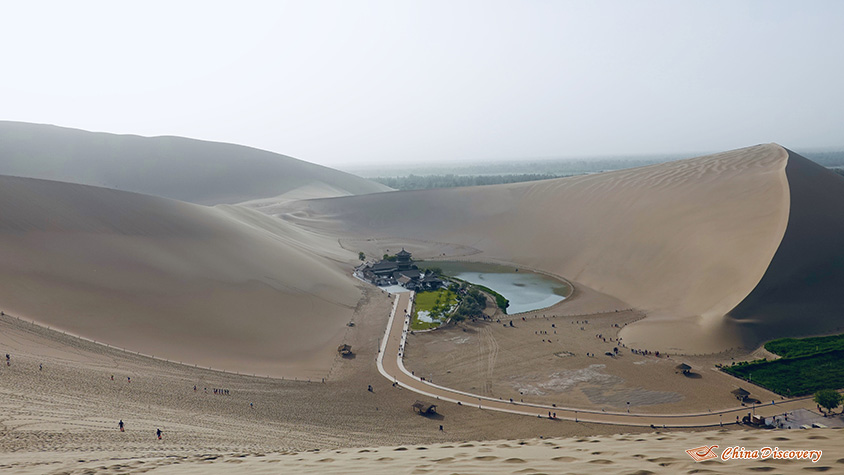
Echoing Sand Mountains and Crescent Lake in Dunhuang
–Dunhuang– another attraction is the Echoing Sand Mountains. It is said, in the sunny days, the sand mountains echo like Orchestra music even if there is no wind. If you slide from the sand mountains, you can hear the echoing sound clearly. Last thing to do is to enjoy Crescent Lake.
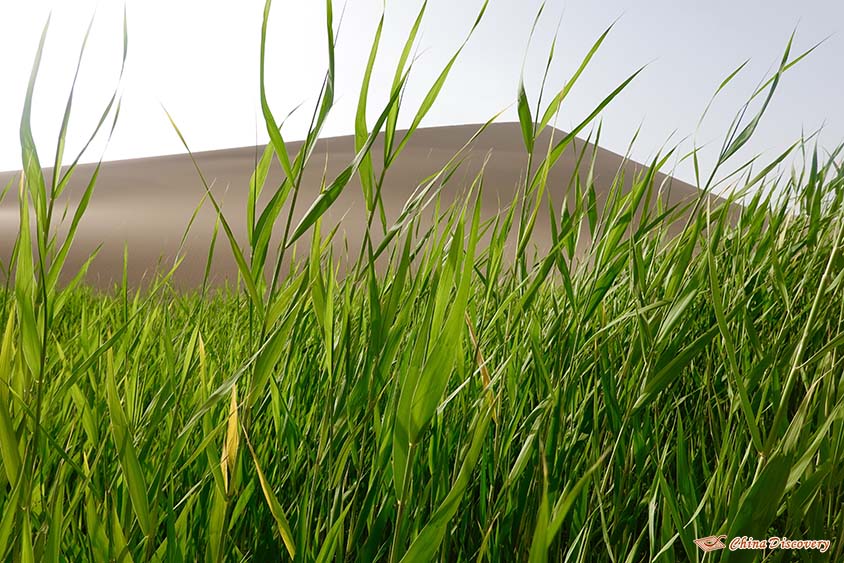
Vibrand Plants around Crescent Lake in Dunhuang
-Surrounded by the Echoing Sand Mountains, Crescent Lake is a beautiful oasis with some well decorated traditional Chinese architecture, some trees and flowers and a lake that has never dried up and shapes like a crescent moon.
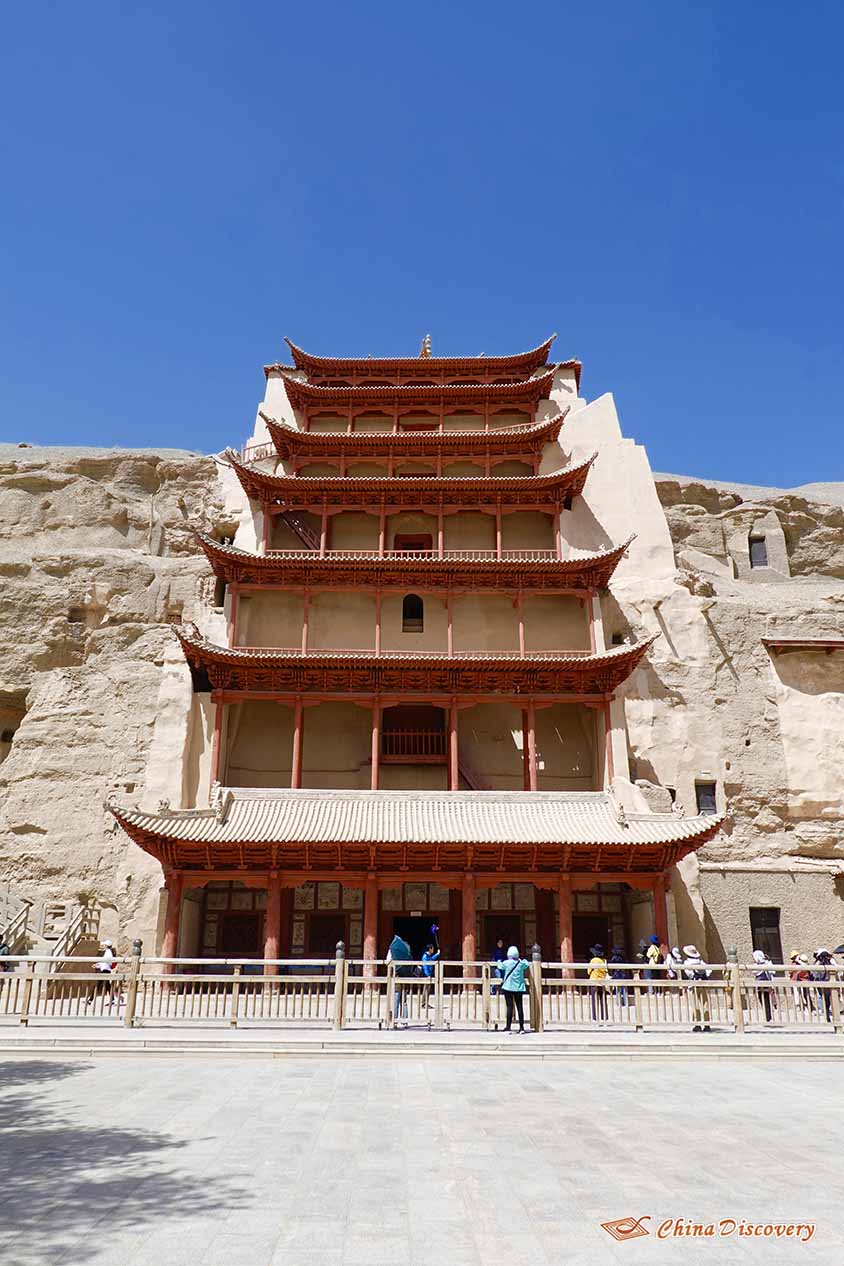
Cave No.96 of Dunhuang Mogao Grottoes
–Mogao Grottoes is famed as the “Louvre of East”, which is outstanding for its exquisite mural paintings and statues. There are now 492 grottoes in which about 45000 square meters mural paintings and 2100 colorfully painted statues from which you can trace the development of Chinese art over 1000 years from one dynasty to the next. During the Tang Dynasty, Dunhuang became the main hub of commerce of the Silk Road and a major religious centre. A large number of the caves were constructed at Mogao during this era, including the two large statues of Buddha at the site, the largest one constructed in 695 following an edict a year earlier by Tang Empress Wu Zetian to build giant statues across the country. Those caves were explored and research by Aurel Stein explorer of Silk Road.
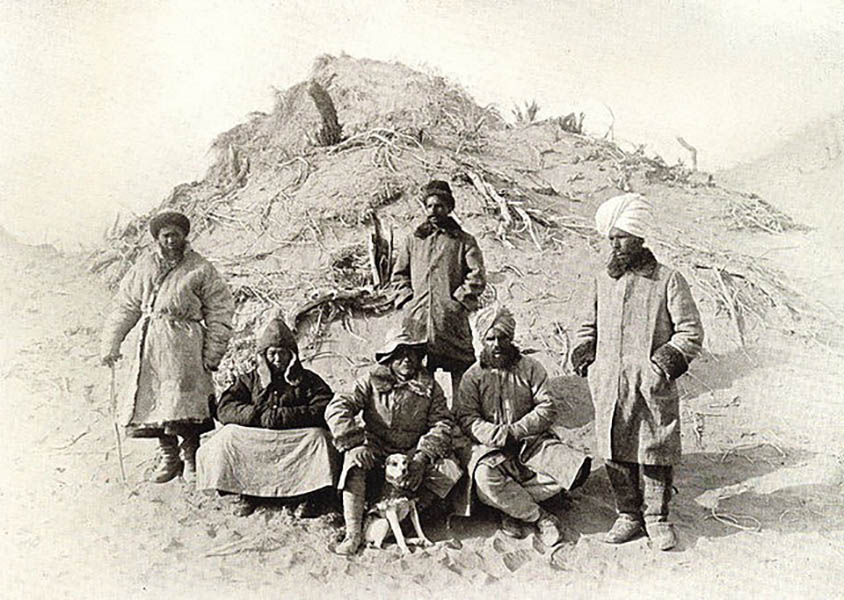
Sir Marc Aurel Stein
-Pearson in history Aurel Stein – Sir Marc Aurel Stein, 26 November 1862 – 26 October 1943 was a Hungarian-born British archaeologist, primarily known for his explorations and archaeological discoveries in Central Asia. He was also a professor at Indian universities. Stein made four major expeditions to Central Asia—in 1900–1901, 1906–1908, 1913–1916 and 1930. Stein’s greatest discovery was made at the Mogao Caves also known as “Caves of the Thousand Buddhas”, near Dunhuang in 1907. It was there that he discovered a printed copy of the Diamond Sutra, the world’s oldest printed text, dating to AD 868, along with 40,000 other scrolls (all removed by gradually winning the confidence and bribing the Taoist caretaker). He took 24 cases of manuscripts and 4 cases of paintings and relics. He was knighted for his efforts, but Chinese nationalists dubbed him a burglar and staged protests against him. His discovery inspired other French, Russian, Japanese, and Chinese treasure hunters and explorers who also took their toll on the collection.
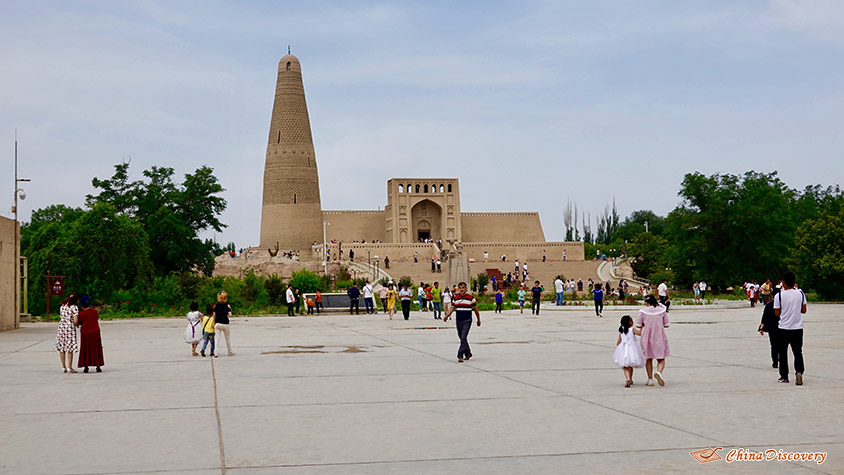
Emin Minaret in Turpan
-Welcome to Turpan – my point entry to Xinjiang. Turpan has long been the centre of a fertile oasis (with water provided by the karez canal system) and an important trade centre. It was historically located along the Silk Road. Historically area was inhabited by Uyghur people. Karez System which is special kind of irrigation system consisting of vertical wells, underground canals, ground canals. The vertically dug wells are linked together to channel the water which occur during summer rain season, or melt from snow mountains of Tianshan range to desired farmlands on the ground.

Ruins of Jiaohe Ancient City Near Turpan City
-Yar city (Jiaohe or Yarkhoto) is a ruined city in the Yarnaz Valley, 10 km west of the city of Turpan in Xinjiang Uyghur Autonomous Region, China. It was the capital of the Jushi Kingdom. It is a natural fortress located atop a steep cliff on a leaf-shaped plateau between two deep river valleys.
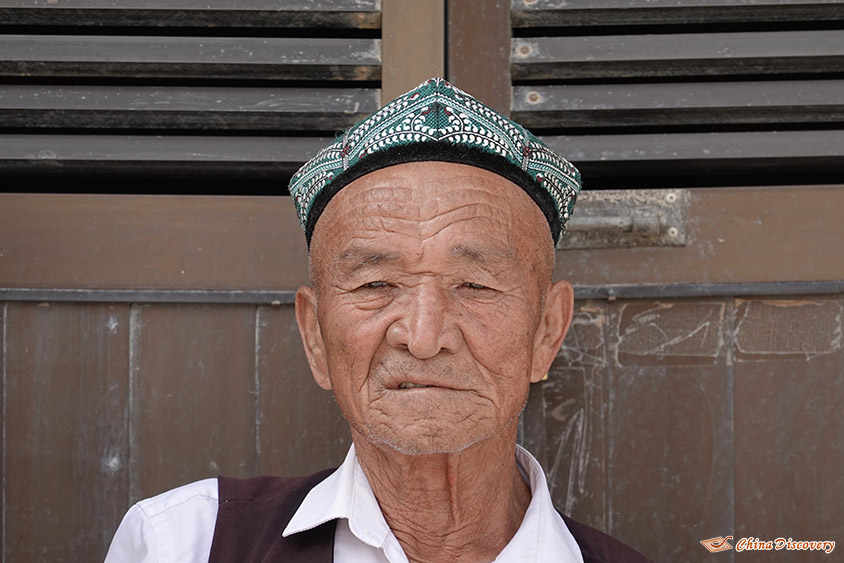
An Aged Uighur Man in Traditional Uighur Costume
–Uighur People are a Turkic people in Central and East Asia. As of 2019, Uyghurs live primarily in the Xinjiang Uyghur Autonomous Region of the People’s Republic of China. They are one of China’s fifty-five officially-recognized ethnic minorities. Uyghurs primarily practice Islam.There are 11 million Uyghur living in China and about million and a half living abroad.
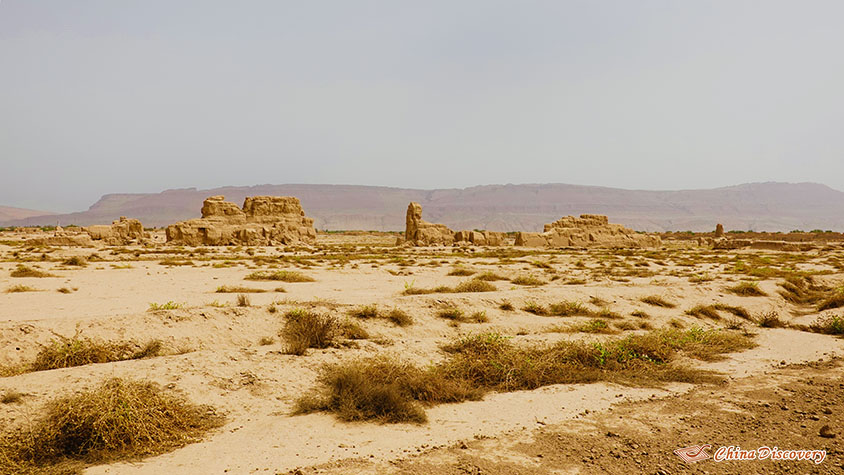
Gaochang in Today's Turpan
-The Uyghurs established a Kingdom in the Turpan region with its capital in Gaochang or Kara-Khoja. The kingdom was known as the Uyghuria Idikut state or Kara-Khoja Kingdom that lasted from 856 to 1389 AD. The Uyghurs were Manichaean but later converted to Buddhism and funded the construction the cave temples in the Bezeklik Caves. The Uyghurs formed an alliance with the rulers of Dunhuang. The Uyghur state later became a vassal state of the Kara-Khitans, and then as a vassal of the Mongol Empire. This Kingdom was led by the Idikuts, or Saint Spiritual Rulers. The last Idikut left Turpan area in 1284 for Kumul, and then Gansu to seek protection of Yuan Dynasty, but local Uyghur Buddhist rulers still held power until the invasion by the Moghul Khizr Khoja in 1389. The conversion of the local Buddhist population to Islam was completed nevertheless only in the second half of the 15th century.
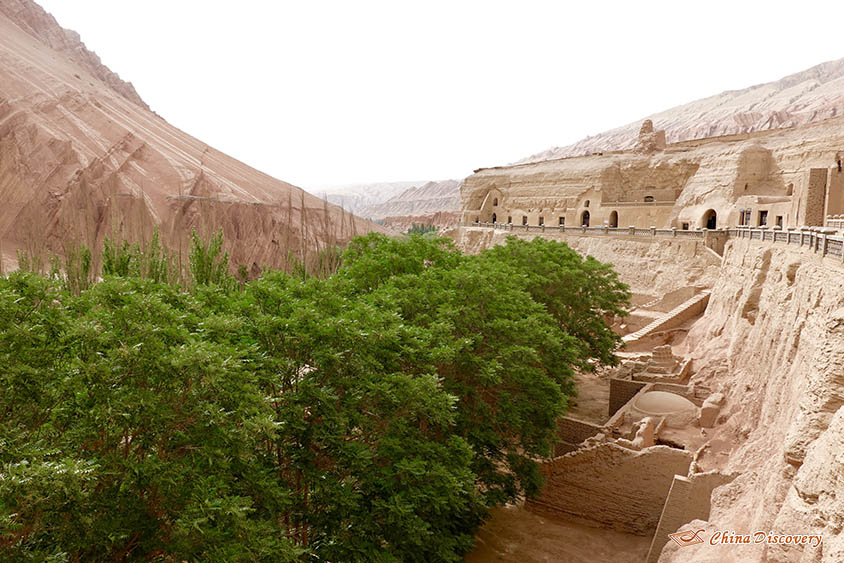
Bezeklik Thousand Buddha Caves in Dunhuang
-The Bezeklik Thousand Buddha Caves is a complex of Buddhist cave grottos dating from the 5th to 14th century between the cities of Turpan and Shanshan (Loulan) at the north-east of the Taklamakan Desert near the ancient ruins of Gaochang in the Mutou Valley, a gorge in the Flaming Mountains, China. They are high on the cliffs of the west Mutou Valley under the Flaming Mountains and most of the surviving caves date from the West Uyghur kingdom around the 10th to 13th centuries.
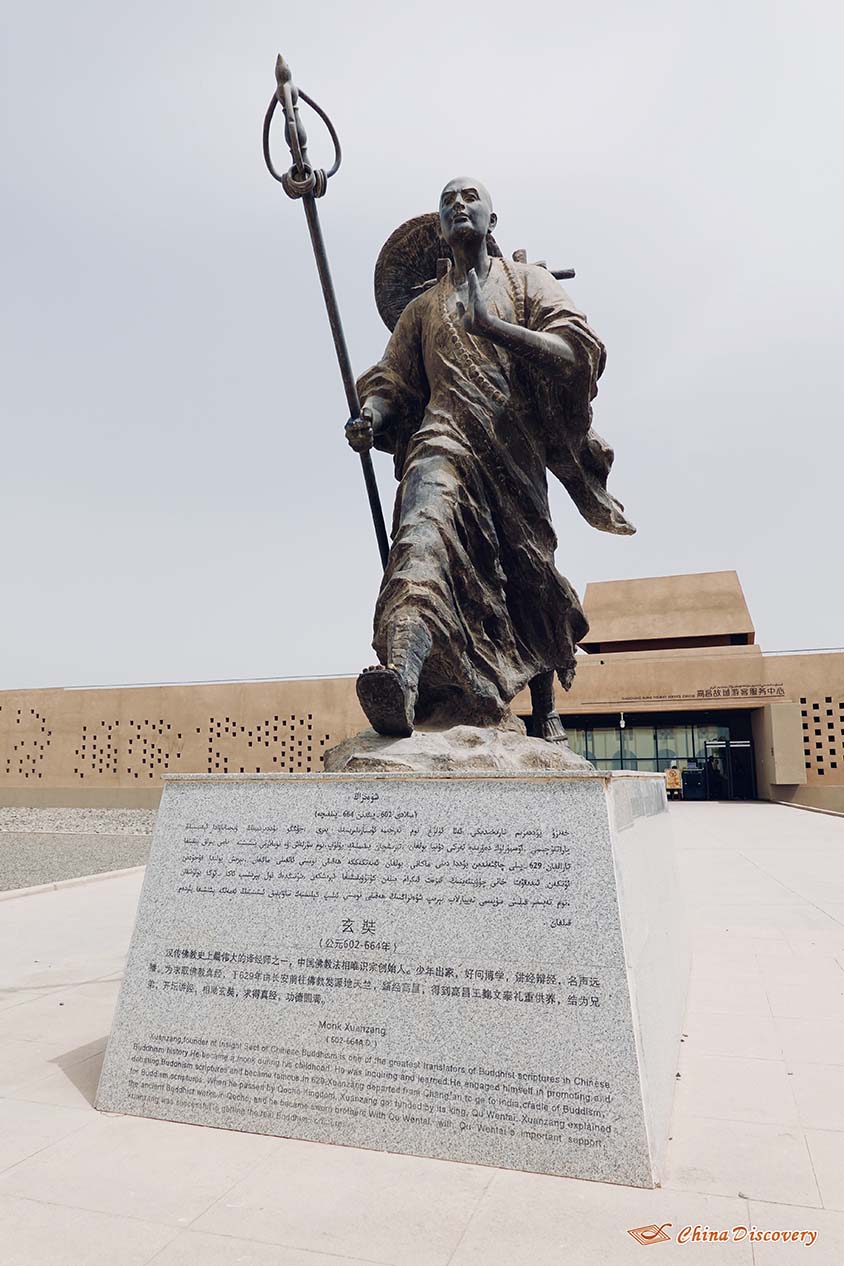
Monk Xuanzang Statue in Front of Gaochang Ruins Tourist Service Center
-People in history – Monk Xuanzang Chinese: c. 602 – 664 was a Chinese Buddhist monk, scholar, traveller, and translator who travelled to India in the seventh century and described the interaction between Chinese Buddhism and Indian Buddhism during the early Tang dynasty. He became famous for his seventeen-year overland journey to India, which is recorded in detail in the classic Chinese text Great Tang Records on the Western Regions, which in turn provided the inspiration for the novel Journey to the West written by Wu Cheng’en during the Ming dynasty, around nine centuries after Xuanzang‘s death.
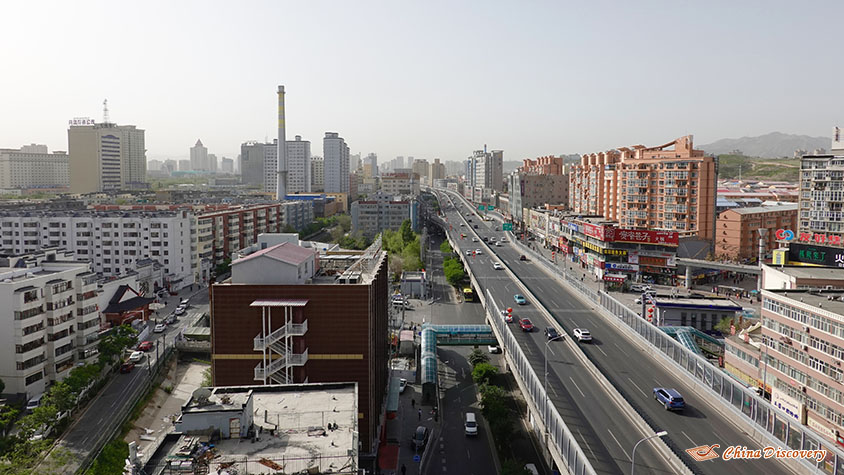
Urumqi, the Capital of Xinjiang
–Ürümqi is the capital of the Xinjiang Uygur Autonomous Region in the far northwest of the People’s Republic of China. Ürümqi was a major hub on the Silk Road during China’s Tang dynasty, and developed its reputation as a leading cultural and commercial center during the Qing dynasty in the 19th century.

Kashgar, Westernmost City in Xinjiang
–Kashgar is one of the westernmost cities of China, near the border with Afghanistan, Kyrgyzstan, Pakistan, and Tajikistan. With a population of over 500,000, Kashgar has served as a trading post and strategically important city on the Silk Road between China, the Middle East, and Europe for over 2,000 years. At the convergence point of widely varying cultures and empires, Kashgar has been under the rule of the Chinese, Turkic, Mongol, and Tibetan empires. The city has also been the site of a number of battles between various groups of people on the steppes.

Karakul Lake in Kashgar
-Karakul Lake. It seats at the foot of the Muztagh Ata (7546m), and along the China Pakistan Highway. At an altitude of 3600m, Karakul Lake is the highest lake of the Pamir plateau. It also features in the amazing combination of lake and snow mountain views. At its surrounding, there are three giant mountains – Muztagh Ata (7546m), Kongur Tagh (7649m) and Kongur Tiube (7530m) which remain snow-covered throughout the year.
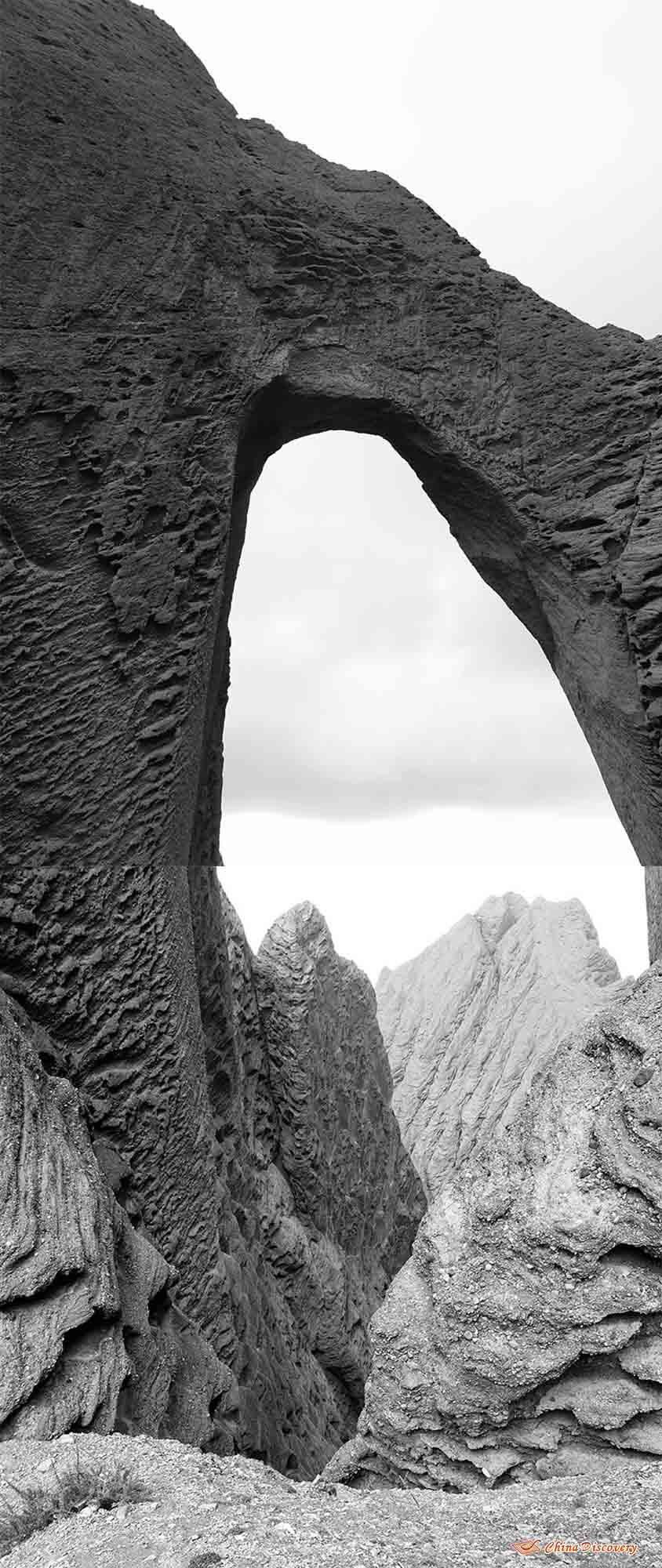
Torugart Pass in Kizilsu Kirghiz Autonomous Prefecture
–Torugart Pass is a mountain pass in the Tian Shan mountain range near the border between the Naryn Province of Kyrgyzstan and the Xinjiang Autonomous Region of China. It is one of two border crossings between Kyrgyzstan and China, the other being Irkeshtam, some 165 km (103 mi) to the southwest. There wasn’t time to cross the pass towards Kyrgistan but before the trip ended I could visit this amazing arch. Time to go home….
-Special Thanks goes to people’s of People Republic of China for these amazing 2 weeks.
Hi, I'm Lily, Marcin's travel consultant. In the two weeks, Marcin traveled from Lanzhou to Kashgar following the ancient Silk Road. Are you interested in his trip? Please feel free to contact me for more details of his travel such as trip itinerary, accommodation or other arrangements. If you want to take a similar trip or customize your own China tour, just e-mail me and I will spare no efforts to meet your demands. It's my pleasure to invite you to our country and join us in appreciating this charming land.
- Lily
- Travel Consultant
- E-mail me now!

Recommended Tours
Top 3 tours chosen by most customers to explore in the best way. Check the detailed itinerary, or tailor your own trip now with us.
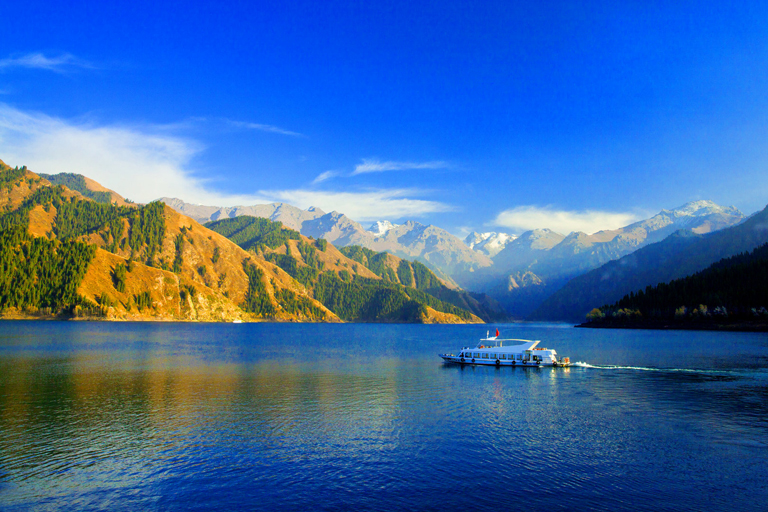
- 11 Days In-depth Wild Silk Road Adventure Tour (Cultural Relic & Unrivalled Landscape)
Lanzhou / Zhangye / Jiayuguan / Dunhuang / Turpan / Urumqi / Kashgar
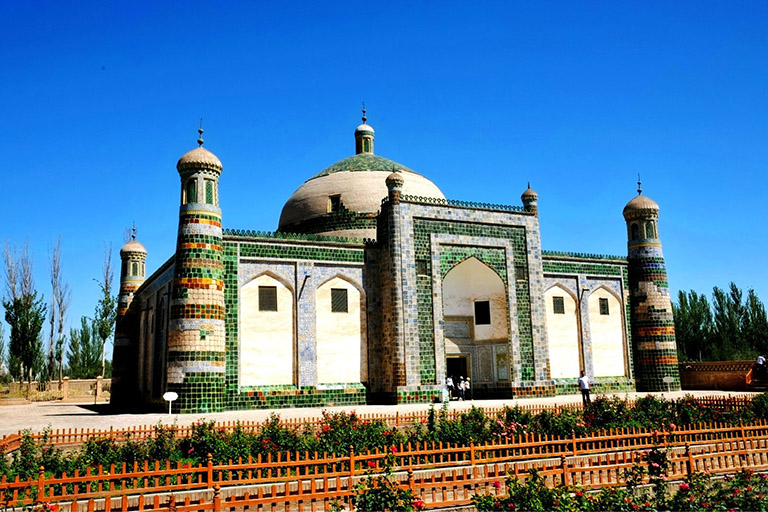
- 10 Days Classic Silk Road Tour (Xian/Dunhuang/Turpan/Kashgar)
Xian / Dunhuang / Turpan / Urumqi / Kashgar
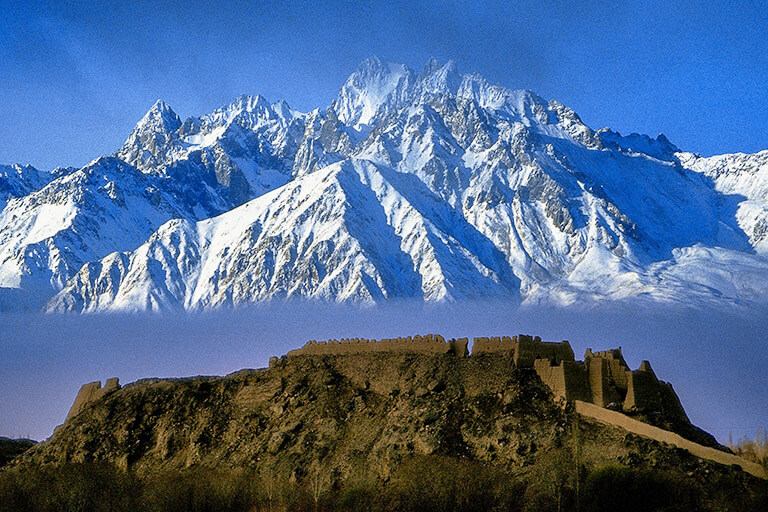
- 8 Days Classic Xinjiang Tour including Urumqi Turpan Kashgar Tashkurgan
Urumqi - Turpan - Kashgar - Tashkurgan
Have a question? Get answers from our travel experts or guests
- Your Question:
- Your Name:
- Your Email:
- Submit










